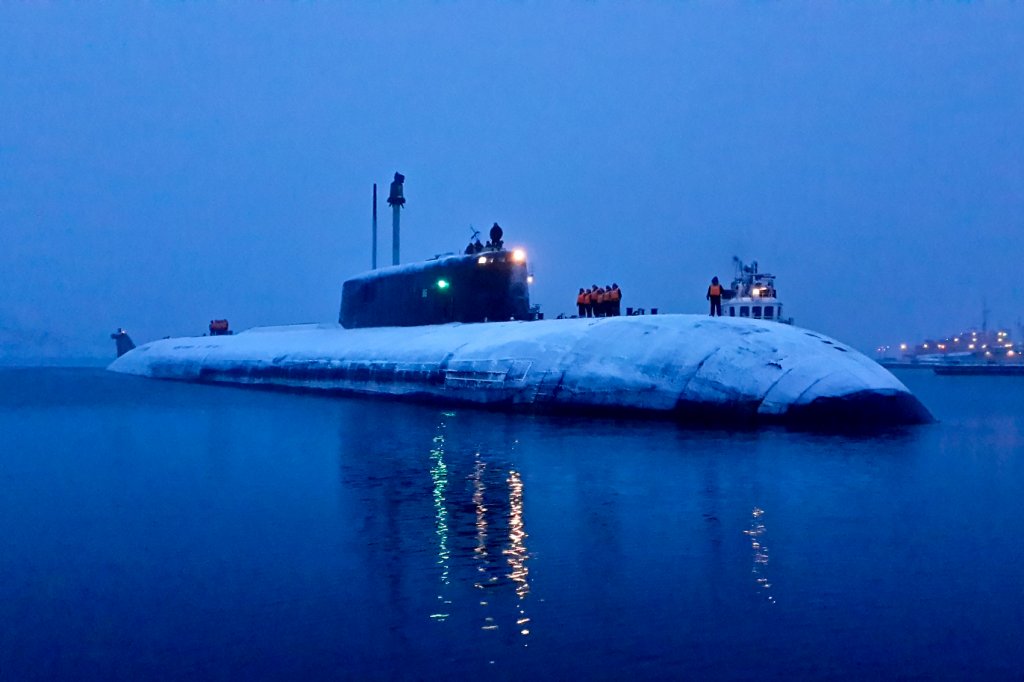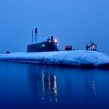
Russia’s Navy Inches Forward
Publication: Eurasia Daily Monitor Volume: 11 Issue: 2
By:

Russia’s Navy entered 2014 with some small signs of progress, while the Ministry of Defense faces significant challenges centered on the development of the Bulava sea-launched ballistic missile (SLBM) for a new generation of submarines. The Navy also operates under the condition of raising the international profile of the country, with its vessels being sent to “strategic areas” of the world’s oceans (Interfax, December 30). Nonetheless, the Russian Navy is currently witnessing the entry into service of new-generation submarines that are unequipped with their primary missile system.
On December 30, following repairs, the Northern Fleet’s nuclear-powered missile submarine Smolensk returned to its base at Zaozersk, Murmansk. Northern Fleet spokesman, Captain 1st Rank Vadim Serga, told Interfax, “The Northern Fleet nuclear-powered missile submarine Smolensk is back to base in Zaozersk from Severodvinsk, where it was repaired and modernized at the Zvezdochka military shipyard” (Interfax, December 30).
According to the submarine commander, Captain 1st Rank Boris Morozov, the vessel successfully completed its first stage of sea trials and the submarine was considered to be operational with its crew “in good health.” The Northern Fleet has accepted three submarines back to base over the past 18 months: the Novomoskovsk and Verkhoturye submarines preceded the arrival of the Smolensk. However, the Smolensk repairs lasted around two years, during which its mechanisms, including the hull and main power unit, were renovated, while its radio-electronic, navigation and other systems were modernized (https://function.mil.ru/news_page/country/more.htm?id=11883602@egNews).
The Smolensk is a Project 949A (Antey) Oscar-II-class submarine. It has been in service for 24 years. According to Deputy Prime Minister Dmitry Rogozin, Moscow will continue to invest in maintaining its numbers of Oscar-II-class nuclear submarines (SSN) through overhauls such as the recent example with the Smolensk. The Smolensk commander stated that in 2014 the submarine will surface at the North Pole in order to plant the Russian flag and the Cross of St. Andrew—the symbol of the Russian Navy (Interfax, December 23, 30).
On December 23, the Project 955 Borey-class Aleksandr Nevskiy ballistic missile nuclear submarine (SSBN) joined the fleet. However, the Nevskiy and its sister ship, the Yuriy Dolgorukiy, still face the problem of the acceptance of their primary armament, the Bulava SLBM. The Nevskiy is scheduled to test fire the Bulava later this year. Meanwhile, the third Borey-class submarine, Vladimir Monomakh, will enter service in 2014. Thus the Nevskiy and the Monomakh will be in service without their complement of Bulava SLBMs (https://russianforces.org/blog/2013/12/yuri_dolgorikiy_and_alexandr_n.shtml). At the same time, the Project 885 SSN Severodvinsk, an advanced multipurpose attack submarine, is due to enter service shortly (RIA Novosti, December 30).
On December 27, the Northern Fleet’s heavy nuclear-powered missile cruiser Pyotr Velikiy arrived on a Mediterranean mission as part of a Russian naval group to the Cypriot port of Limassol. The Northern Fleet’s spokesman, Captain 1st Rank Serga, told Interfax, “The visit of the heavy nuclear-powered missile cruiser Pyotr Velikiy to Limassol is the first business visit of a Russian nuclear-powered warship in the history of international cooperation between Russia and the Republic of Cyprus. Russian Ambassador to the Republic of Cyprus Stanislav Osadchiy will visit the Russian ship anchored in the foreign port” (Interfax, December 27). Pyotr Velikiy departed from Severomorsk, the main base of the Northern Fleet, on October 22, 2013. It has covered around 8,000 nautical miles since the beginning of its voyage. The defense ministry stressed that such visits to foreign ports are consistent with the Kremlin’s directive to resume the regular presence of Russian warships in strategic areas of the world ocean. It is evident that these foreign port calls are intended to exaggerate the capabilities and capacity of the modern Russian Navy.
These developments also raise the issue of where the Navy stands in the ambitious conventional rearmament program to 2020. CNA analyst Dmitry Gorenburg highlighted a Russian publication in November 2013 detailing contracts for naval shipbuilding projects. The total for the Russian Navy was “41 contracted combat ships, incl. 2 universal amphibious assault ships, 2 large amphibious assault ships, 14 frigates, 15 corvettes, 8 small missile boats. Of these, 24 ships are under construction, including 2 universal amphibious assault ships, 2 large amphibious assault ships, 9 frigates, 5 corvettes, 6 small missile boats. Six of these ships have been launched, incl. 1 universal amphibious assault ship, 1 large amphibious assault ship, 1 frigate, 1 corvette, and 2 small missile boats” (https://russiamil.wordpress.com/2013/11/18/summary-of-russian-navy-ship-construction/#). While the rearmament program to 2020 is clearly ambitious, the extent to which the Navy may actually gain is open to question.
In the meantime, Rogozin is pursuing his plans to maintain Oscar-II-class submarines, and progress is being made with refits. Raising the flag through high-profile foreign visits for the Navy and symbolically planting the Russian flag, at least during the Smolensk surfacing at the North Pole, suggests the political leadership wants to utilize the Navy mainly for PR purposes. The key conundrum remains squaring the circle with the Borey-class submarines and the troubled Bulava missile system. By any stretch of the imagination, the Russian Navy faces a challenging year ahead.




